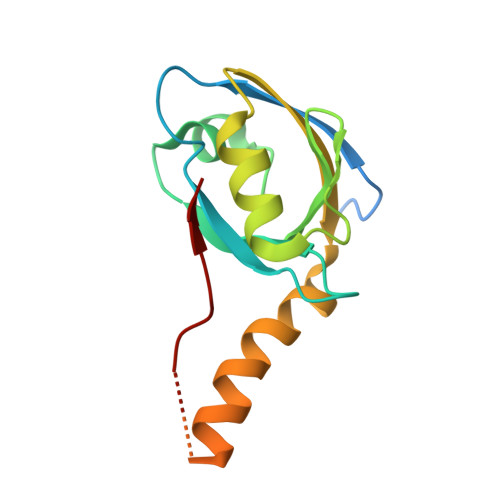LGI1-ADAM22-MAGUK configures transsynaptic nanoalignment for synaptic transmission and epilepsy prevention.
Fukata, Y., Chen, X., Chiken, S., Hirano, Y., Yamagata, A., Inahashi, H., Sanbo, M., Sano, H., Goto, T., Hirabayashi, M., Kornau, H.C., Pruss, H., Nambu, A., Fukai, S., Nicoll, R.A., Fukata, M.(2021) Proc Natl Acad Sci U S A 118
- PubMed: 33397806
- DOI: https://doi.org/10.1073/pnas.2022580118
- Primary Citation of Related Structures:
7CQF - PubMed Abstract:
Physiological functioning and homeostasis of the brain rely on finely tuned synaptic transmission, which involves nanoscale alignment between presynaptic neurotransmitter-release machinery and postsynaptic receptors. However, the molecular identity and physiological significance of transsynaptic nanoalignment remain incompletely understood. Here, we report that epilepsy gene products, a secreted protein LGI1 and its receptor ADAM22, govern transsynaptic nanoalignment to prevent epilepsy. We found that LGI1-ADAM22 instructs PSD-95 family membrane-associated guanylate kinases (MAGUKs) to organize transsynaptic protein networks, including NMDA/AMPA receptors, Kv 1 channels, and LRRTM4-Neurexin adhesion molecules. Adam22 ΔC5/ΔC5 knock-in mice devoid of the ADAM22-MAGUK interaction display lethal epilepsy of hippocampal origin, representing the mouse model for ADAM22-related epileptic encephalopathy. This model shows less-condensed PSD-95 nanodomains, disordered transsynaptic nanoalignment, and decreased excitatory synaptic transmission in the hippocampus. Strikingly, without ADAM22 binding, PSD-95 cannot potentiate AMPA receptor-mediated synaptic transmission. Furthermore, forced coexpression of ADAM22 and PSD-95 reconstitutes nano-condensates in nonneuronal cells. Collectively, this study reveals LGI1-ADAM22-MAGUK as an essential component of transsynaptic nanoarchitecture for precise synaptic transmission and epilepsy prevention.
- Division of Membrane Physiology, Department of Molecular and Cellular Physiology, National Institute for Physiological Sciences, National Institutes of Natural Sciences, Aichi 444-8787, Japan.
Organizational Affiliation:



















